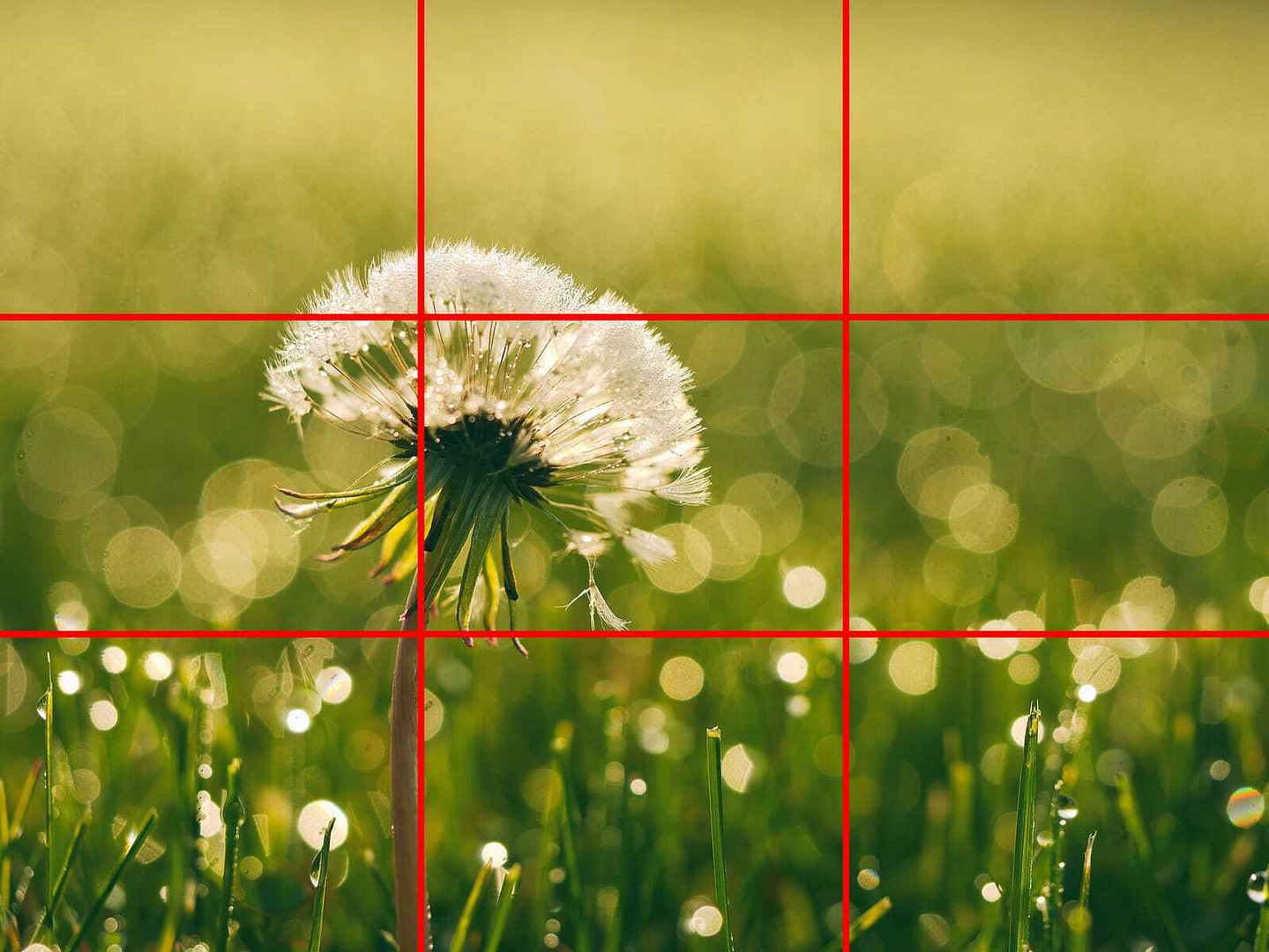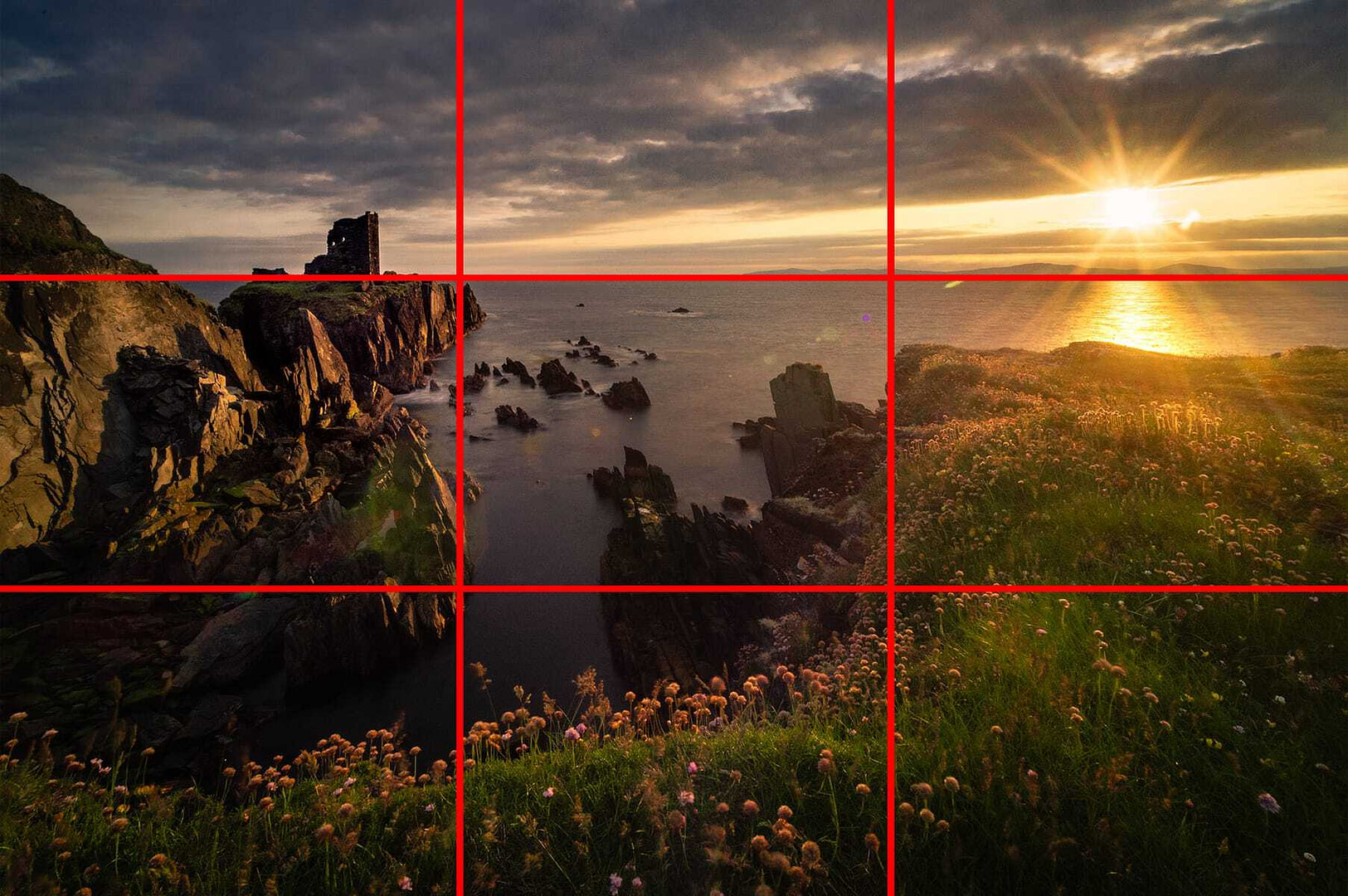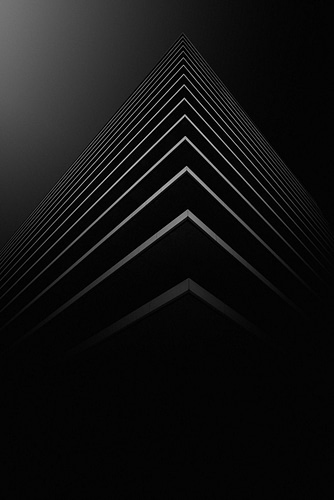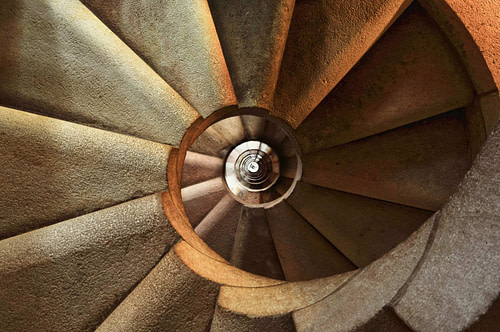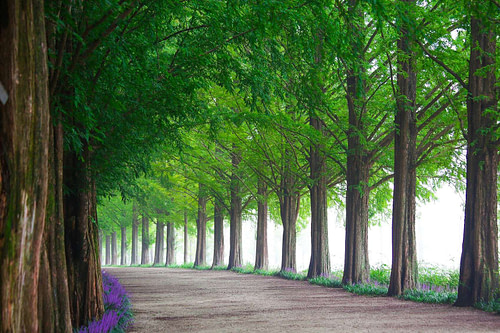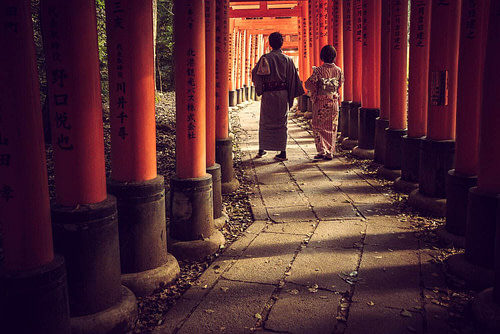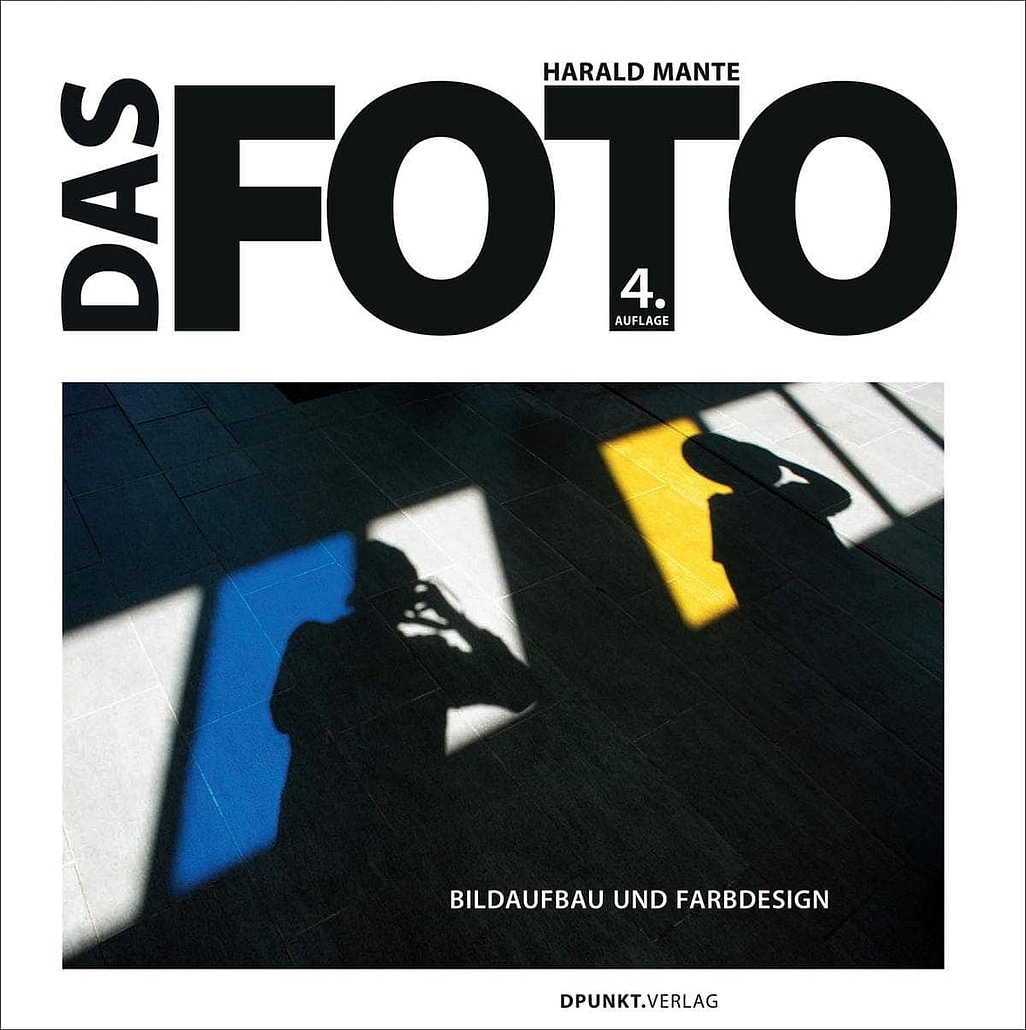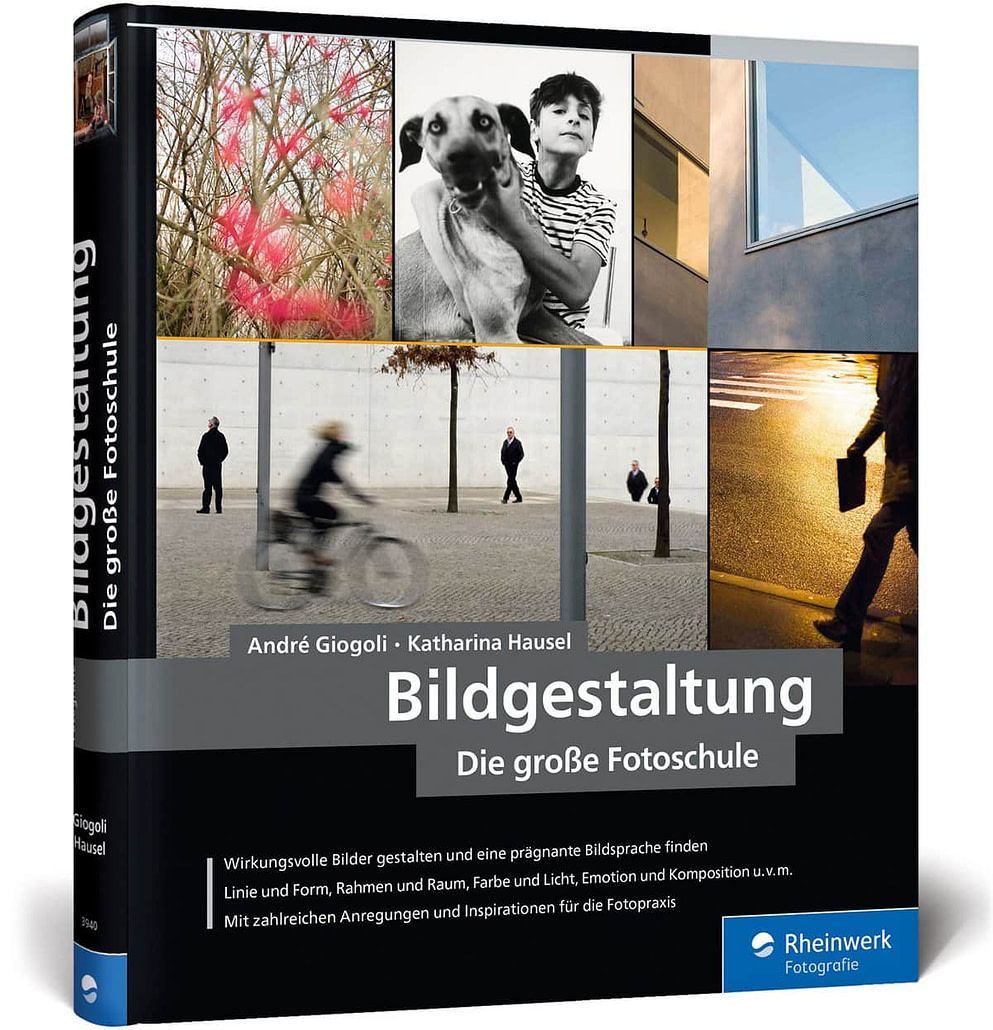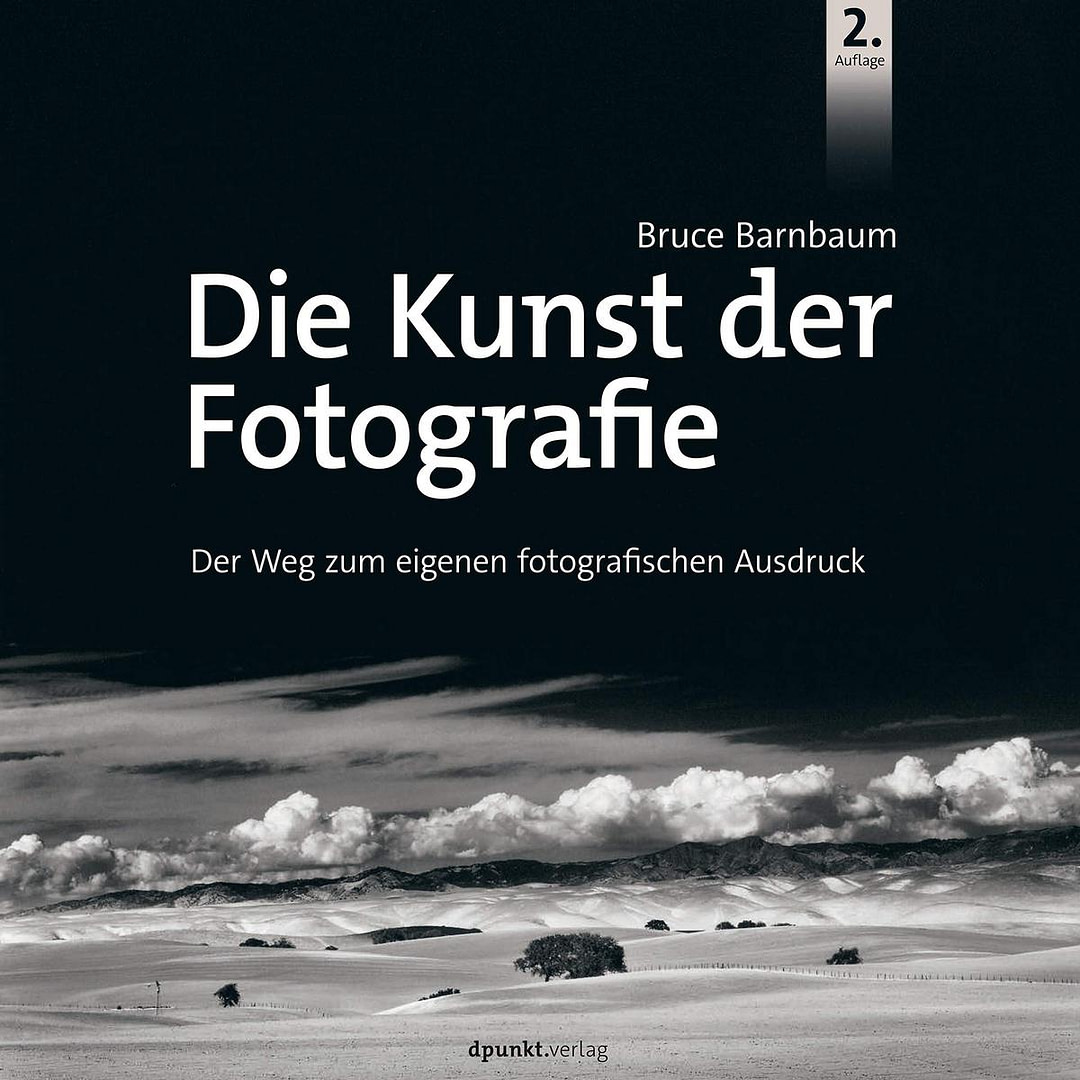[av_heading heading=’Modul 3 – Lektion 17
Ein paar Regeln zum brechen‚ tag=’h1′ link_apply=“ link=’manually,http://‘ link_target=“ style=’blockquote modern-quote modern-centered‘ size=“ subheading_active=’subheading_below‘ subheading_size=’16‘ margin=“ padding=’20‘ color=“ custom_font=“ custom_class=“ admin_preview_bg=“ av-desktop-hide=“ av-medium-hide=“ av-small-hide=“ av-mini-hide=“ av-medium-font-size-title=“ av-small-font-size-title=“ av-mini-font-size-title=“ av-medium-font-size=“ av-small-font-size=“ av-mini-font-size=“]
Teil 2:
[/av_heading]
[av_hr class=’invisible‘ height=’70‘ shadow=’no-shadow‘ position=’center‘ custom_border=’av-border-thin‘ custom_width=’50px‘ custom_border_color=“ custom_margin_top=’30px‘ custom_margin_bottom=’30px‘ icon_select=’yes‘ custom_icon_color=“ icon=’ue808′ font=’entypo-fontello‘ av_uid=’av-6yofkp‘ admin_preview_bg=“]
[av_textblock size=“ font_color=“ color=“ av-medium-font-size=“ av-small-font-size=“ av-mini-font-size=“ av_uid=’av-6t20jd‘ admin_preview_bg=“]
Lerne die Regeln wie ein Meister, damit du sie wie ein Künstler brechen kannst!
Pablo Picasso
[/av_textblock]
[av_hr class=’invisible‘ height=’50‘ shadow=’no-shadow‘ position=’center‘ custom_border=’av-border-thin‘ custom_width=’50px‘ custom_border_color=“ custom_margin_top=’30px‘ custom_margin_bottom=’30px‘ icon_select=’yes‘ custom_icon_color=“ icon=’ue808′ font=’entypo-fontello‘ av_uid=’av-6yofkp‘ admin_preview_bg=“]
[av_textblock size=“ font_color=“ color=“ av-medium-font-size=“ av-small-font-size=“ av-mini-font-size=“ av_uid=’av-6t20jd‘ admin_preview_bg=“]
In dieser Lektion lernst du…
- …die Wirkung von Linien.
- …wie dir der goldene Schnitt bei der Bildkomposition helfen kann.
- …die Bedeutung von Formen und Mustern.
[/av_textblock]
[av_one_full first min_height=“ vertical_alignment=’av-align-top‘ space=“ margin=’0px‘ margin_sync=’true‘ padding=’0px,0px,20px,0px‘ border=“ border_color=“ radius=’0px‘ radius_sync=’true‘ background_color=“ src=“ attachment=“ attachment_size=“ background_position=’top left‘ background_repeat=’no-repeat‘ animation=“ mobile_breaking=“ mobile_display=“ av_uid=’av-6j2c8h‘]
[av_textblock size=“ font_color=“ color=“ av-medium-font-size=“ av-small-font-size=“ av-mini-font-size=“ av_uid=’av-6d2agh‘ admin_preview_bg=“]
Linien:
[/av_textblock]
[av_hr class=’invisible‘ height=’10‘ shadow=’no-shadow‘ position=’center‘ custom_border=’av-border-thin‘ custom_width=’50px‘ custom_border_color=“ custom_margin_top=’30px‘ custom_margin_bottom=’30px‘ icon_select=’yes‘ custom_icon_color=“ icon=’ue808′ font=’entypo-fontello‘ admin_preview_bg=“ av_uid=’av-65g089′]
[av_textblock size=“ font_color=“ color=“ av-medium-font-size=“ av-small-font-size=“ av-mini-font-size=“ av_uid=’av-5z8v1t‘ admin_preview_bg=“]
Linien sind neben Kontrast und Farbtönen ein zusätzliches, sehr starkes Element, um die Stimmung auf einem Foto auszudrücken. Dabei steht nicht eine Linienart für eine bestimmte Stimmung, sondern das Zusammenspiel der Linien mit anderen Formen und dem Kontrast gibt hier den Ausschlag.
Grundsätzlich gilt, dass das menschliche Auge den Linien folgt, also ist hier durchaus auch Vorsicht geboten. Trägst du den Blick des Betrachters mit deinen Linien aus dem Bild hinaus, wird es zwangsläufig passieren, dass er sich abwendet.
Dies trifft insbesondere auf starke Linien zu. Diagonale Linien werden als fallend und unbeständig bzw. unbefestigt wahrgenommen und vermitteln daher eine gewisse Dynamik, während vertikale und horizontale Linien eher stabil und beständig aufgefasst werden und daher der Dynamik eines Bildes entgegenwirken.
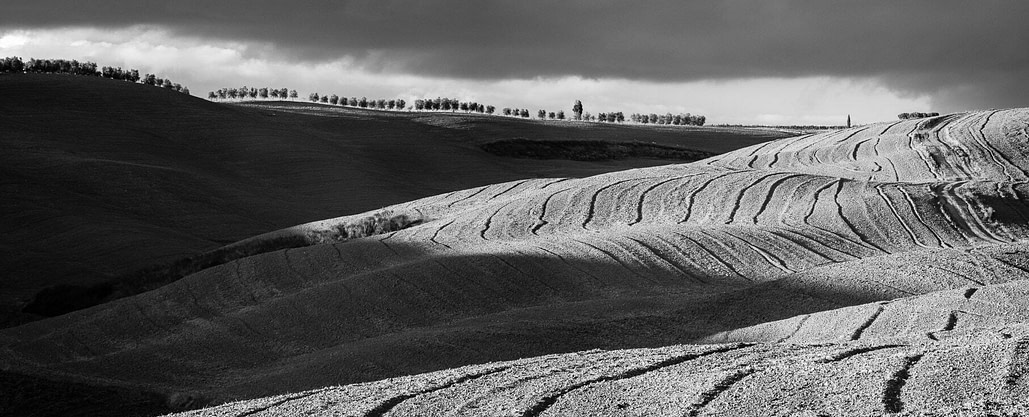 Diese Fotografie ist von sehr dynamischer Linienführung geprägt, bedingt durch das Licht-Schatten-Siel aber auch die Furchen im Boden. Der starke Kontrast unterstreicht diese Dynamik zusätzlich.
Diese Fotografie ist von sehr dynamischer Linienführung geprägt, bedingt durch das Licht-Schatten-Siel aber auch die Furchen im Boden. Der starke Kontrast unterstreicht diese Dynamik zusätzlich.
Gebogene Linien können beides ausdrücken, Dynamik und Ruhe. Je enger eine Kurve ist, desto größer ist die Dynamik die sie vermittelt. Linien müssen auch nicht immer als solche direkt erkennbar sein. Unser Auge ist auch in der Lage, eng in Reihe gelegene Punkte (oder Objekte) zu verbinden und daraus eine Linie abzuleiten.
[/av_textblock]
[/av_one_full]
[av_hr class=’invisible‘ height=’70‘ shadow=’no-shadow‘ position=’center‘ custom_border=’av-border-thin‘ custom_width=’50px‘ custom_border_color=“ custom_margin_top=’30px‘ custom_margin_bottom=’30px‘ icon_select=’yes‘ custom_icon_color=“ icon=’ue808′ font=’entypo-fontello‘ av_uid=’av-6rta75′ admin_preview_bg=“]
[av_one_full first min_height=“ vertical_alignment=’av-align-top‘ space=“ margin=’0px‘ margin_sync=’true‘ padding=’0px,0px,20px,0px‘ border=“ border_color=“ radius=’0px‘ radius_sync=’true‘ background_color=“ src=“ attachment=“ attachment_size=“ background_position=’top left‘ background_repeat=’no-repeat‘ animation=“ mobile_breaking=“ mobile_display=“ av_uid=’av-6j2c8h‘]
[av_textblock size=“ font_color=“ color=“ av-medium-font-size=“ av-small-font-size=“ av-mini-font-size=“ av_uid=’av-6d2agh‘ admin_preview_bg=“]
Goldener Schnitt und Drittelregel:
[/av_textblock]
[av_hr class=’invisible‘ height=’10‘ shadow=’no-shadow‘ position=’center‘ custom_border=’av-border-thin‘ custom_width=’50px‘ custom_border_color=“ custom_margin_top=’30px‘ custom_margin_bottom=’30px‘ icon_select=’yes‘ custom_icon_color=“ icon=’ue808′ font=’entypo-fontello‘ admin_preview_bg=“ av_uid=’av-65g089′]
[av_textblock size=“ font_color=“ color=“ av-medium-font-size=“ av-small-font-size=“ av-mini-font-size=“ av_uid=’av-5z8v1t‘ custom_class=“ admin_preview_bg=“]
Goldener Schnitt
Der sogenannte goldene Schnitt ist eine sehr alte Gestaltungsregel, die sehr häufig in der Fotografie, aber auch in Architektur und Kunst im Allgemeinen zur Anwendung kommt.
Durch diese Regel wird eine Strecke so in zwei Abschnitte geteilt, dass das Verhältnis des kleineren zum größeren Abschnitt genau dem Verhältnis des größeren Abschnitts zur gesamten Strecke entspricht.
Eine Strecke mit einer Länge von 1 wird dadurch bei 0,618 mit unendlichen Nachkommastellen geteilt.
Alle Elemente im Bild, die für dich wichtig sind und die dem Betrachter zuerst ins Auge fallen sollen, kannst du entsprechend auf einem der Schnittpunkte platzieren an denen sich die Linien kreuzen oder nah an den imaginären horizontalen und vertikalen Linien.
Auf diese Weise wirkt das Bild für den Betrachter harmonisch und Ausgewogen:
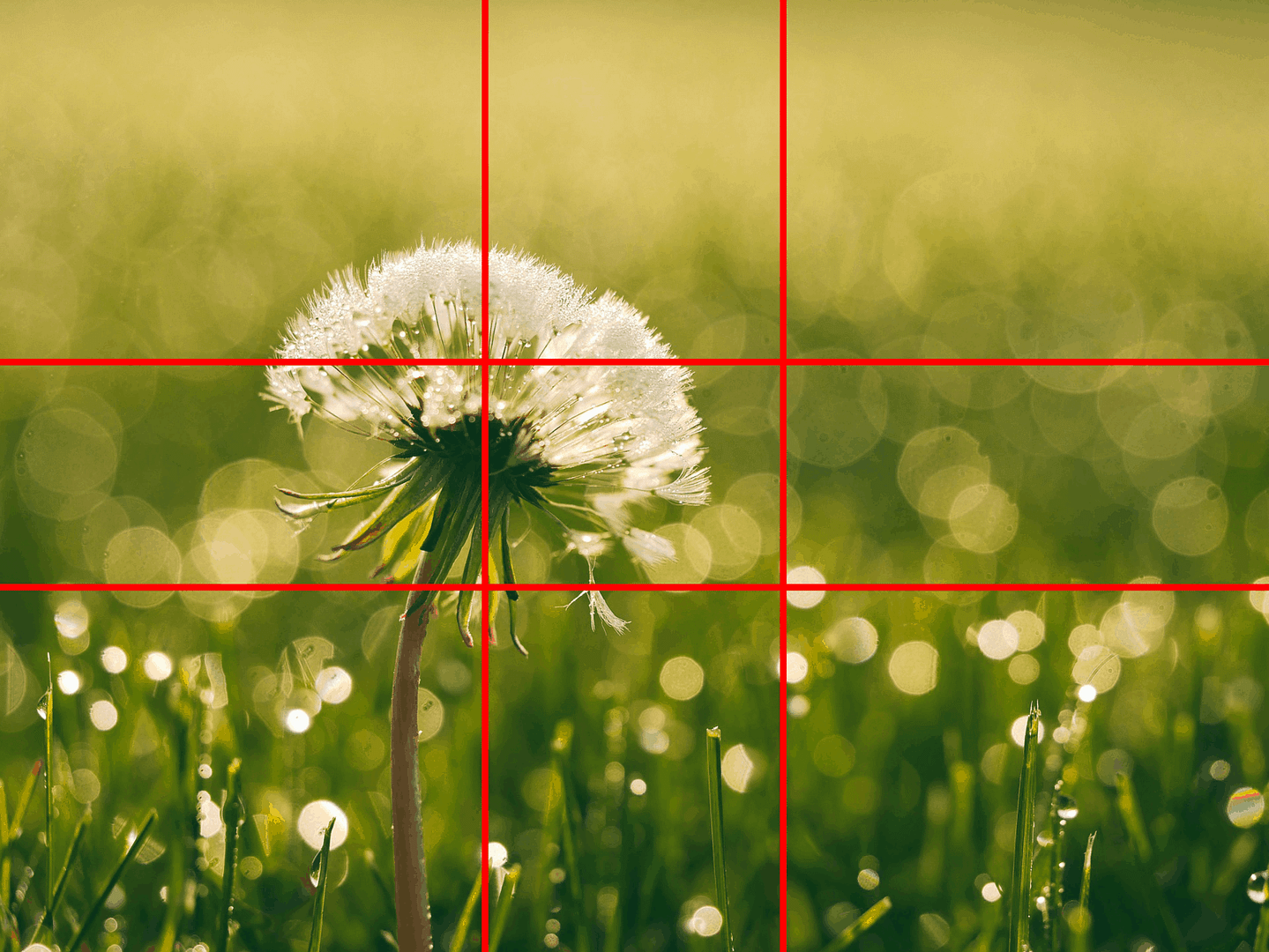
Dritteltegel
Im Vergleich zum goldenen Schnitt ist die Drittelregel relativ einfach anwendbar.
Das Bild wird in neun gleiche Abschnitte geteilt – jeweils drei horizontal und vertikal. An den Trennungslinien der entstehenden Felder bzw. an den Schnittpunkten kannst du dich bei der Positionierung deiner Motive orientieren um sie aus der Bildmitte zu ziehen.
In Photoshop und auch auf den meisten Kamera-Displays kann ein entsprechendes Raster eingeblendet werden:
[/av_textblock]
[/av_one_full][av_hr class=’invisible‘ height=’10‘ shadow=’no-shadow‘ position=’center‘ custom_border=’av-border-thin‘ custom_width=’50px‘ custom_border_color=“ custom_margin_top=’30px‘ custom_margin_bottom=’30px‘ icon_select=’yes‘ custom_icon_color=“ icon=’ue808′ font=’entypo-fontello‘ admin_preview_bg=“ av_uid=’av-65g089′]
[av_icon_box position=’top‘ icon_style=“ boxed=“ icon=’ue80f‘ font=’entypo-fontello‘ title=’TIPP‘ link=“ linktarget=“ linkelement=“ font_color=“ custom_title=“ custom_content=“ color=“ custom_bg=“ custom_font=“ custom_border=“ av-medium-font-size-title=“ av-small-font-size-title=“ av-mini-font-size-title=“ av-medium-font-size=“ av-small-font-size=“ av-mini-font-size=“ av_uid=’av-jh21dkak‘ admin_preview_bg=“]
Insbesondere bei Landschaftsfotos sieht es in 9 von 10 Fällen einfach nicht schön aus, wenn der Horizont genau in der Mitte liegt. Orientiere dich hier an der Drittel-Regel oder dem goldenen Schnitt:
[/av_icon_box]
[av_hr class=’invisible‘ height=’50‘ shadow=’no-shadow‘ position=’center‘ custom_border=’av-border-thin‘ custom_width=’50px‘ custom_border_color=“ custom_margin_top=’30px‘ custom_margin_bottom=’30px‘ icon_select=’yes‘ custom_icon_color=“ icon=’ue808′ font=’entypo-fontello‘ av_uid=’av-65g089′ admin_preview_bg=“]
[av_one_full first min_height=“ vertical_alignment=’av-align-top‘ space=“ margin=’0px‘ margin_sync=’true‘ padding=’0px,0px,20px,0px‘ border=“ border_color=“ radius=’0px‘ radius_sync=’true‘ background_color=“ src=“ attachment=“ attachment_size=“ background_position=’top left‘ background_repeat=’no-repeat‘ animation=“ mobile_breaking=“ mobile_display=“ av_uid=’av-6j2c8h‘]
[av_textblock size=“ font_color=“ color=“ av-medium-font-size=“ av-small-font-size=“ av-mini-font-size=“ av_uid=’av-6d2agh‘ admin_preview_bg=“]
(Geometrische) Formen und Muster:
[/av_textblock]
[av_hr class=’invisible‘ height=’10‘ shadow=’no-shadow‘ position=’center‘ custom_border=’av-border-thin‘ custom_width=’50px‘ custom_border_color=“ custom_margin_top=’30px‘ custom_margin_bottom=’30px‘ icon_select=’yes‘ custom_icon_color=“ icon=’ue808′ font=’entypo-fontello‘ admin_preview_bg=“ av_uid=’av-65g089′]
[av_textblock size=“ font_color=“ color=“ av-medium-font-size=“ av-small-font-size=“ av-mini-font-size=“ av_uid=’av-5z8v1t‘ admin_preview_bg=“]
Formen
Es sind nicht nur geometrische Formen wie Dreiecke, Quadrate oder Kreise, die als Wiederholungen starken Einfluss auf ein Bild nehmen können.
Auch unregelmäßige Formen können, wenn man sie gezielt in Szene setzt als Fixpunkt auf einem Bild agieren und das Auge des Betrachters anziehen.
Die geometrischen Formen beziehen sich zum Beispiel auf die Anordnung von Objekten. Ein Bild mit drei Köpfen nebeneinander wirkt schon auf den ersten Blick langweilig. Werden die drei Köpfe aber als Dreieck ausgerichtet verleiht dies dem Foto eine gewisse Spannung und macht das Gesamtbild gleich interessanter. Je nach Lage des erzeugten Dreiecks (nicht nur auf das Bild mit den Köpfen bezogen) kommt mal mehr Dynamik (Spitze zeigt nach unten oder ist gekippt), mal mehr Stabilität (Spitze zeigt nach oben) ins Bild.
Muster
Von einem Muster spricht man, sobald sich Formen oder Linien wiederholen. Reihen von Säulen oder Bögen in Kirchen oder anderen Bauwerken sind ein gutes Beispiel.
Aber auch die vertikalen Baumstämme einer Allee sowie die Schatten dieser Stämme stellen ein Muster dar. Genauer gesagt sogar zwei, denn der Schatten bildet hier einen Gegenpunkt. Da ein Foto dieser Allee nicht durch einen Mittelpunkt sondern durch das Muster, welches die Bäume und deren Schatten zeichnen, bestimmt wird, wird das Auge des Betrachters eben auf diese Muster und nicht auf einen einzelnen Baum gelenkt:
Bilder, die viele Details beinhalten, werden in ihrer Wirkung auf das menschliche Auge und dadurch auch auf unser Gehirn ruhiger, wenn die einzelnen Details zu Mustern zusammengefasst werden.
Muster können dir helfen den Inhalt deiner Bilder zu ordnen und dein Motiv hervorzuheben. Dies klappt besonders gut, wenn das eigentliche Motiv eine Unterbrechung des Musters darstellt:
[/av_textblock]
[/av_one_full]
[av_one_full first min_height=“ vertical_alignment=’av-align-top‘ space=“ margin=’0px‘ margin_sync=’true‘ padding=’0px,0px,20px,0px‘ border=“ border_color=“ radius=’0px‘ radius_sync=’true‘ background_color=“ src=“ attachment=“ attachment_size=“ background_position=’top left‘ background_repeat=’no-repeat‘ animation=“ mobile_breaking=“ mobile_display=“ av_uid=’av-6j2c8h‘]
[av_textblock size=“ font_color=“ color=“ av-medium-font-size=“ av-small-font-size=“ av-mini-font-size=“ av_uid=’av-6d2agh‘ admin_preview_bg=“]
Fazit:
[/av_textblock]
[av_hr class=’invisible‘ height=’10‘ shadow=’no-shadow‘ position=’center‘ custom_border=’av-border-thin‘ custom_width=’50px‘ custom_border_color=“ custom_margin_top=’30px‘ custom_margin_bottom=’30px‘ icon_select=’yes‘ custom_icon_color=“ icon=’ue808′ font=’entypo-fontello‘ admin_preview_bg=“ av_uid=’av-65g089′]
[av_textblock size=“ font_color=“ color=“ av-medium-font-size=“ av-small-font-size=“ av-mini-font-size=“ av_uid=’av-5z8v1t‘ admin_preview_bg=“]
Alle in dieser und der Letzten Lektion aufgezählten Elemente nehmen getrennt voneinander Einfluss auf deine Fotos.
Das gesamte Erscheinungsbild eines Fotos entsteht jedoch erst und ausschließlich durch die Beziehungen, die alle Einzelelemente untereinander und miteinander eingehen.
Erst durch die Interaktion aller Gestaltungselemente ergibt sich das Ergebnis, das wir als Betrachter von einem Bild wahrnehmen. Abstrakt gesprochen gehen Linien und Strukturen ineinander über, wird durch Linien und Formen Balance oder Ungleichgewicht hergestellt und Tiefe und Bewegung erzeugt.
Die Kunst des Fotografierens ist es nun all diese Elemente in der realen Welt zu finden und entsprechend einzusetzen.
Als Linien und Formen dienen zum Beispiel Gebäude, Bäume, Schatten oder Wolken. Je nachdem wie du diese realen Objekte auf deinem Foto in Einklang bringst, wird dein Ergebnis gut oder außergewöhnlich ausfallen.
[/av_textblock]
[/av_one_full]
[av_hr class=’invisible‘ height=’50‘ shadow=’no-shadow‘ position=’center‘ custom_border=’av-border-thin‘ custom_width=’50px‘ custom_border_color=“ custom_margin_top=’30px‘ custom_margin_bottom=’30px‘ icon_select=’yes‘ custom_icon_color=“ icon=’ue808′ font=’entypo-fontello‘ av_uid=’av-6rta75′ admin_preview_bg=“]
[av_textblock size=“ font_color=“ color=“ av-medium-font-size=“ av-small-font-size=“ av-mini-font-size=“ admin_preview_bg=“ av_uid=’av-2zyf7l‘]
Buchempfehlungen um die Inhalte zu vertiefen:
[/av_textblock]
[av_one_half first min_height=“ vertical_alignment=’av-align-top‘ space=“ margin=’0px‘ margin_sync=’true‘ link=“ linktarget=“ link_hover=“ padding=’0px,0px,0px,0px‘ border=“ border_color=’#efefef‘ radius=’0px‘ radius_sync=’true‘ background=’bg_color‘ background_color=“ background_gradient_color1=“ background_gradient_color2=“ background_gradient_direction=’vertical‘ src=“ attachment=“ attachment_size=“ background_position=’top left‘ background_repeat=’no-repeat‘ animation=“ mobile_breaking=“ mobile_display=“ av_uid=’av-yohh85′]
[av_icon_box position=’top‘ icon_style=“ boxed=“ icon=’ue84f‘ font=’entypo-fontello‘ title=’Das Foto: Bildaufbau und Farbdesign‘ link=’manually,https://amzn.to/2ELBccy‘ linktarget=’_blank‘ linkelement=’both‘ font_color=“ custom_title=“ custom_content=“ color=“ custom_bg=“ custom_font=“ custom_border=“ av-medium-font-size-title=“ av-small-font-size-title=“ av-mini-font-size-title=“ av-medium-font-size=“ av-small-font-size=“ av-mini-font-size=“ av_uid=’av-jh7xszb6′ admin_preview_bg=“]
Standardwerk und Klassiker der Fotoliteratur.
[/av_icon_box]
[/av_one_half]
[av_one_half min_height=“ vertical_alignment=’av-align-top‘ space=“ margin=’0px‘ margin_sync=’true‘ row_boxshadow_color=“ row_boxshadow_width=’10‘ link=“ linktarget=“ link_hover=“ padding=’0px‘ padding_sync=’true‘ highlight_size=’1.1′ border=“ border_color=’#efefef‘ radius=’0px‘ radius_sync=’true‘ column_boxshadow_color=“ column_boxshadow_width=’10‘ background=’bg_color‘ background_color=“ background_gradient_color1=“ background_gradient_color2=“ background_gradient_direction=’vertical‘ src=“ attachment=“ attachment_size=“ background_position=’top left‘ background_repeat=’no-repeat‘ animation=“ mobile_breaking=’av-break-at-tablet‘ mobile_display=“ av_uid=’av-yohh85′]
[av_icon_box position=’top‘ icon_style=“ boxed=“ icon=’ue84f‘ font=’entypo-fontello‘ title=’Bildgestaltung. Die große Fotoschule‘ link=’manually,https://amzn.to/2ys7LH0′ linktarget=’_blank‘ linkelement=’both‘ font_color=“ custom_title=“ custom_content=“ color=“ custom_bg=“ custom_font=“ custom_border=“ av-medium-font-size-title=“ av-small-font-size-title=“ av-mini-font-size-title=“ av-medium-font-size=“ av-small-font-size=“ av-mini-font-size=“ av_uid=’av-jh7xszb6′ admin_preview_bg=“]
Ob Linie, Form, Raum, Farbe oder Licht: Alles wird anhand von konkreten Fotos besprochen.
[/av_icon_box]
[/av_one_half]
[av_one_half first min_height=“ vertical_alignment=’av-align-top‘ space=“ margin=’0px‘ margin_sync=’true‘ row_boxshadow_color=“ row_boxshadow_width=’10‘ link=“ linktarget=“ link_hover=“ padding=’0px‘ padding_sync=’true‘ highlight_size=’1.1′ border=“ border_color=’#efefef‘ radius=’0px‘ radius_sync=’true‘ column_boxshadow_color=“ column_boxshadow_width=’10‘ background=’bg_color‘ background_color=“ background_gradient_color1=“ background_gradient_color2=“ background_gradient_direction=’vertical‘ src=“ attachment=“ attachment_size=“ background_position=’top left‘ background_repeat=’no-repeat‘ animation=“ mobile_breaking=’av-break-at-tablet‘ mobile_display=“ av_uid=’av-yohh85′]
[av_icon_box position=’top‘ icon_style=“ boxed=“ icon=’ue84f‘ font=’entypo-fontello‘ title=’Die Kunst der Fotografie‘ link=’manually,https://amzn.to/2rLc8sI‘ linktarget=’_blank‘ linkelement=’both‘ font_color=“ custom_title=“ custom_content=“ color=“ custom_bg=“ custom_font=“ custom_border=“ av-medium-font-size-title=“ av-small-font-size-title=“ av-mini-font-size-title=“ av-medium-font-size=“ av-small-font-size=“ av-mini-font-size=“ av_uid=’av-jh7xszb6′ custom_class=“ admin_preview_bg=“]
Bruce Barnbaum’s Bücher muss man gelesen haben!
[/av_icon_box]
[/av_one_half]
[av_hr class=’invisible‘ height=’100′ shadow=’no-shadow‘ position=’center‘ custom_border=’av-border-thin‘ custom_width=’50px‘ custom_border_color=“ custom_margin_top=’30px‘ custom_margin_bottom=’30px‘ icon_select=’yes‘ custom_icon_color=“ icon=’ue808′ font=’entypo-fontello‘ av_uid=’av-6rta75′ admin_preview_bg=“]
[av_textblock size=“ font_color=“ color=“ av-medium-font-size=“ av-small-font-size=“ av-mini-font-size=“ av_uid=’av-13f3op‘ admin_preview_bg=“]
Dein Kursfortschritt:
[av_hr class=’invisible‘ height=’100′ shadow=’no-shadow‘ position=’center‘ custom_border=’av-border-thin‘ custom_width=’50px‘ custom_border_color=“ custom_margin_top=’30px‘ custom_margin_bottom=’30px‘ icon_select=’yes‘ custom_icon_color=“ icon=’ue808′ font=’entypo-fontello‘ av_uid=’av-6rta75′ admin_preview_bg=“]
[av_one_half first min_height=“ vertical_alignment=“ space=“ custom_margin=“ margin=’0px‘ padding=’0px‘ border=“ border_color=“ radius=’0px‘ background_color=“ src=“ background_position=’top left‘ background_repeat=’no-repeat‘ animation=“ mobile_breaking=“ mobile_display=“ av_uid=’av-rlrep‘]
[av_button label=’VORHERIGE LEKTION‘ link=’page,6789′ link_target=“ size=’small‘ position=’center‘ label_display=“ icon_select=’no‘ icon=’ue800′ font=’entypo-fontello‘ color=’theme-color‘ custom_bg=’#444444′ custom_font=’#ffffff‘ av_uid=’av-ixlr5′ admin_preview_bg=“]
[/av_one_half]
[av_one_half min_height=“ vertical_alignment=“ space=“ custom_margin=“ margin=’0px‘ padding=’0px‘ border=“ border_color=“ radius=’0px‘ background_color=“ src=“ background_position=’top left‘ background_repeat=’no-repeat‘ animation=“ mobile_breaking=“ mobile_display=“ av_uid=’av-csyup‘]
[av_button label=’NÄCHSTE LEKTION‘ link=’page,6794′ link_target=“ size=’small‘ position=’center‘ label_display=“ icon_select=’no‘ icon=’ue800′ font=’entypo-fontello‘ color=’theme-color‘ custom_bg=’#444444′ custom_font=’#ffffff‘ av_uid=’av-ayi3t‘ admin_preview_bg=“]
[/av_one_half]

